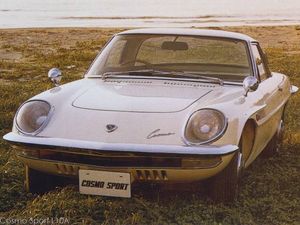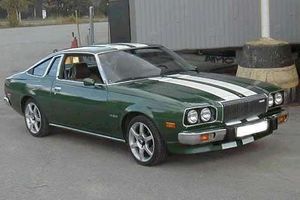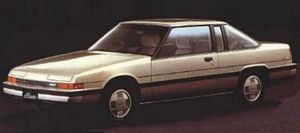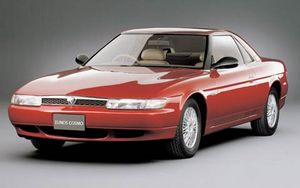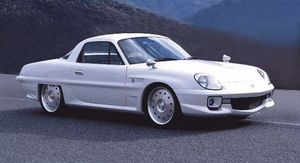.
Mazda Cosmo: Difference between revisions
Red marquis (talk | contribs) (→Photos) |
Red marquis (talk | contribs) mNo edit summary |
||
| (17 intermediate revisions by 5 users not shown) | |||
| Line 2: | Line 2: | ||
{| border=0 cellspacing=0 cellpadding=4 style="float:right; margin:0 0 .5em 1em; width:250px; background:#fff; border-collapse:collapse; border:1px solid #999; font-size:83%; line-height:1.5; " summary="Infobox Automobile" | {| border=0 cellspacing=0 cellpadding=4 style="float:right; margin:0 0 .5em 1em; width:250px; background:#fff; border-collapse:collapse; border:1px solid #999; font-size:83%; line-height:1.5; " summary="Infobox Automobile" | ||
|- style="text-align:center; background:#f0f0f0;" | |- style="text-align:center; background:#f0f0f0;" | ||
| colspan=2 style="padding:0; background:#996; color:#fff; border-bottom:1px solid #999;" | [[Image: | | colspan=2 style="padding:0; background:#996; color:#fff; border-bottom:1px solid #999;" | [[Image:Cosmosport track.jpg|400px]] | ||
|- style="color:#fff; background:#996; font-size:larger;" | |- style="color:#fff; background:#996; font-size:larger;" | ||
! colspan=2 | '''Mazda Cosmo''' | ! colspan=2 | '''Mazda Cosmo''' | ||
| Line 9: | Line 9: | ||
|} | |} | ||
The '''Cosmo series''' is a line of sports coupes produced by Mazda and powered by rotory engines. The various Mazda Cosmoes are known for their forward-looking technology, style, and performance. Although the Cosmoes have not had great sale success internationally, they have achieved somewhat of a cult following and there are many owners and clubs throughout the world. | |||
See Wikicars' comprehensive '''[[{{FULLPAGENAMEE}} Review]]'''. | See Wikicars' comprehensive '''[[{{FULLPAGENAMEE}} Review]]'''. | ||
| Line 33: | Line 33: | ||
<gallery> | <gallery> | ||
Image:Mazda Cosmo 110S 1967 White Profile 2.jpg | |||
Image:Cosmosporthi008.jpg | |||
</gallery> | </gallery> | ||
| Line 49: | Line 51: | ||
==First Generation (1967-1972)== | ==First Generation (1967-1972)== | ||
See also [[Mazda Cosmo 110S]] for more information | |||
[[Image:Mazda Cosmo Sport L10A Front.jpg|thumb|right|300px|Mazda Cosmo 110S]] | |||
{{-}} | {{-}} | ||
==Second Generation (1975–1981)== | ==Second Generation (1975–1981)== | ||
[[Image:Mazda RX5 Green.jpg|thumb|right|300px|Mazda CD Cosmo]] | |||
| | |||
See also [[Mazda CD Cosmo]] for more information | |||
The Cosmo | The second generation '''CD Cosmo''' appeared in 1975 and lasted until 1981. It was known as the '''Cosmo AP''' in Japan, and sold internationally as the '''[[Mazda RX-5]]''', though in some export markets its piston powered counterpart was called the '''[[Mazda 121]]''' (a name later applied to Mazda's subcompact model). Mazda America used the Mazda Cosmo name and offered it from 1976 through 1978. The CD Cosmo/RX-5 series was a flop internationally as Mazda tried too hard to "Americanize" the car. It was however an enormous success in Japan where over 55,000 where sold in the first year alone. Due to its poor sales as an export, the series-II version from 79-81 was not exported and remained on domestic sale only. | ||
{{-}} | {{-}} | ||
| Line 177: | Line 69: | ||
==Thrid Generation (1982-1989)== | ==Thrid Generation (1982-1989)== | ||
See also [[Mazda HB Cosmo]] for more information | |||
[[Image:Mazda HB Cosmo FrontSide.jpg|thumb|right|300px|Mazda HB Cosmo]] | |||
| | |||
| | |||
The Mazda HB Cosmo was a luxury coupe and hardtop version of the 1981 [[Mazda Luce]] sedan, and was powered by a range of rotary engines. After the Luce was updated to the [[HC platform]] in 1986 the hardtop Cosmo was dropped, but the Cosmo coupe continued on with the [[HB platform]] until 1989. | |||
Neither the Cosmo coupe, or the Luce sedan that it was based on were imported to the United States because of the American dislike for rotary engines. However, the piston-engined version of the Luce, the [[Mazda 929]], was imported and sold starting in 1988. | |||
This generation of the Cosmo came with three different rotary engines, the 12A-SPI, the 12A-Turbo, and the 13B RE-SI. | |||
{{-}} | |||
==Fourth Generation (1990-1995)== | |||
See also [[Mazda JC Cosmo]] for more information | |||
[[Image:Mazda Eunos Cosmo 1990 FrontSide.jpg|thumb|right|300px|Mazda JC Cosmo]] | |||
Image:Mazda Eunos Cosmo 1990 | |||
A truly modern '''[[Eunos]] Cosmo''' (roughly based on the 1985 MX-03 [[concept car]]) started production in 1990 on the new [[Mazda J platform#JC|JC platform]]. The Eunos Cosmo was the top-line touring flagship of the Eunos luxury channel. It is the only Mazda to use a triple-rotor engine. The car was a 2+2 coupe and was loaded with power amenities. An electronically controlled 4-speed [[automatic transmission]] was mandatory. | |||
{{-}} | {{-}} | ||
| Line 252: | Line 92: | ||
==Mazda Cosmo 21== | ==Mazda Cosmo 21== | ||
See also [[Mazda Cosmo 21]] for more information | |||
Image:Mazda Cosmo 21 2002 SideFront.jpg| | [[Image:Mazda Cosmo 21 2002 SideFront.jpg|thumb|right|300px|Cosmo 21 Side]] | ||
{{-}} | |||
==Worldwide== | ==Worldwide== | ||
Latest revision as of 16:06, 4 April 2009
This article is a stub. Help us expand it, and you get a cookie.
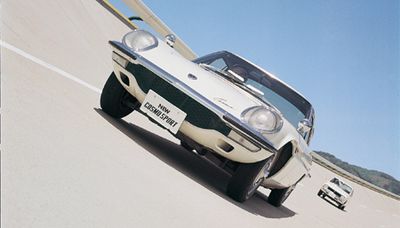
| |
| Mazda Cosmo | |
|---|---|
| Mazda |
The Cosmo series is a line of sports coupes produced by Mazda and powered by rotory engines. The various Mazda Cosmoes are known for their forward-looking technology, style, and performance. Although the Cosmoes have not had great sale success internationally, they have achieved somewhat of a cult following and there are many owners and clubs throughout the world.
See Wikicars' comprehensive Mazda_Cosmo Review.
Recent Changes
Styles and Major Options
Pricing
Gas Mileage
Reliability
Safety
Photos
Colors
Main Competitors
Unique Attributes
Resale Values
Criticisms
First Generation (1967-1972)
See also Mazda Cosmo 110S for more information
Second Generation (1975–1981)
See also Mazda CD Cosmo for more information
The second generation CD Cosmo appeared in 1975 and lasted until 1981. It was known as the Cosmo AP in Japan, and sold internationally as the Mazda RX-5, though in some export markets its piston powered counterpart was called the Mazda 121 (a name later applied to Mazda's subcompact model). Mazda America used the Mazda Cosmo name and offered it from 1976 through 1978. The CD Cosmo/RX-5 series was a flop internationally as Mazda tried too hard to "Americanize" the car. It was however an enormous success in Japan where over 55,000 where sold in the first year alone. Due to its poor sales as an export, the series-II version from 79-81 was not exported and remained on domestic sale only.
Thrid Generation (1982-1989)
See also Mazda HB Cosmo for more information
The Mazda HB Cosmo was a luxury coupe and hardtop version of the 1981 Mazda Luce sedan, and was powered by a range of rotary engines. After the Luce was updated to the HC platform in 1986 the hardtop Cosmo was dropped, but the Cosmo coupe continued on with the HB platform until 1989.
Neither the Cosmo coupe, or the Luce sedan that it was based on were imported to the United States because of the American dislike for rotary engines. However, the piston-engined version of the Luce, the Mazda 929, was imported and sold starting in 1988.
This generation of the Cosmo came with three different rotary engines, the 12A-SPI, the 12A-Turbo, and the 13B RE-SI.
Fourth Generation (1990-1995)
See also Mazda JC Cosmo for more information
A truly modern Eunos Cosmo (roughly based on the 1985 MX-03 concept car) started production in 1990 on the new JC platform. The Eunos Cosmo was the top-line touring flagship of the Eunos luxury channel. It is the only Mazda to use a triple-rotor engine. The car was a 2+2 coupe and was loaded with power amenities. An electronically controlled 4-speed automatic transmission was mandatory.
Mazda Cosmo 21
See also Mazda Cosmo 21 for more information
Worldwide
Design quirks and oddities
Awards
See also
This article features content from the Wikipedia Mazda Cosmo page with these contributors.


